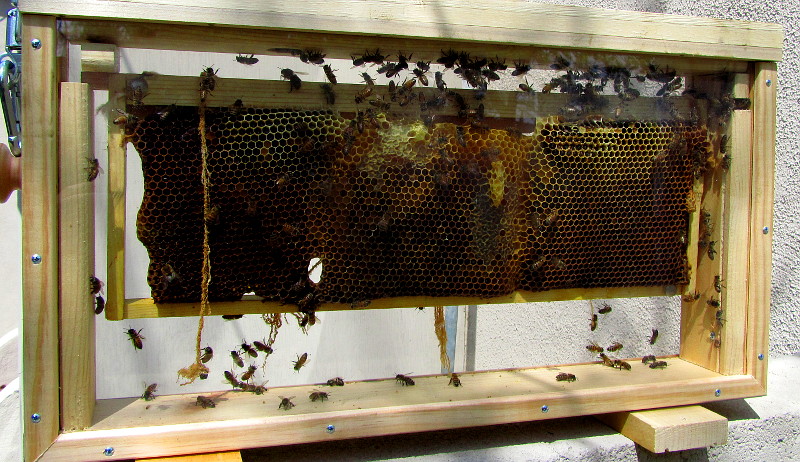
Once I got into beekeeping fully, I couldn’t see the appeal of an observation hive to the hobby beekeeper; I was so concerned about the bees’ well-being that the observation hive had little draw for me. In contexts other than educational venues—such as the fair—it seemed like a luxury to me. I’m happy to say that a lot has changed.
I’ve spent years sharing my enthusiasm for honeybees verbally to friends, family members and strangers (and anyone who is unfortunate enough to open the can of worms that is my favorite hobby). During that time I’ve realized that many people, myself included, are visual and kinesthetic learners. That is, we learn best by touching, holding, handling and experiencing events, rather than simply listening to lectures or watching videos.
Observation hives offer an invaluable experience to people who would otherwise never want to get close to a buzzing, humming, vibrating hive of honeybees. For those with fears or phobias, an observation hive is as close as they might ever get. For others, it’s a way of experiencing bees and learning a bit about themselves in the process: Do bees interest me? Can I see myself handling a frame of buzzing insects?
Established beekeepers know the draw of the observation hive at market or when otherwise promoting their business. With a simple frame or two from a hive, customers can marvel at the very bees that produced the sellers’ honey, wax, pollen, salve or tincture. This is a wonderful way to bring people to your table or booth and strike up conversation. The observation hive not essential for even the experienced beekeeper—but it spreads the love and excitement of beekeeping, and for that it’s well worth the effort.



